Do You Know the Difference Between Eastern and Western Easter Foods?
(Gerry Furth-Sides, Photos and Kontos Company content are courtesy of the company) Easter is the most sacred holiday for Eastern Orthodox Christians and Western Christians. Each sect celebrates it differently. And the more commercial Western version has the most fun of all, especially this year when takes place on April 1.
//localfoodeater.com/new-historic-american-jewish-marshmallow-easter-treats/
But waiting for the two to take place on the same day is a little like waiting for an eclipse because there are many years in between them. Both Easters aligned last year, but won’t again until 2025.
This year Easter takes place on April 1 for those of Western Christian Church. It is a time of celebration and joy, celebrating life. For recipes to go with this Chef Roberta Deen mean, please see:
//localfoodeater.com/easter-bread-chickpea-flour-cookbook/
The rest of Christianity follows the Gregorian calendar, started by Pope Gregory in 1582 to fix a length issue with the Julian calendar, which had allowed the Holy Day to drift away from the Spring Equinox, a time period in which the early church originally associated it. There is a 13-day difference between the two calendars.
Secondly, early Eastern Orthodox doctrine dictates Pascha must take place after the Jewish Passover to maintain the timeline of Christ’s life and Crucifixion. Western Churches don’t adhere to this doctrine so Easter can take place before, during or after Passover. Eastern Orthodox Greeks are in church services the entire evening and stay up till dawn with family and friends, enjoying homemade savories and sweets. The next day, a whole lamb is cooked over a spit as part of a feast, as shown below
There are other differences between the two holidays. Instead of pastels, Easter eggs in the Eastern Orthodox tradition are dyed a deep red color to symbolize the Crucifixion and Resurrection of Jesus. Sometimes those eggs are incorporated into braided bread known as Tsoureki. Every family has their own version of this bread, and the Kontos family’s recipe is available here. Feel free to substitute multicolored eggs into the recipe.
Karidopita is a Lenten Walnut Cake, which translates roughly to “Walnut Pie.” This moist, flavorful walnut cake is flavored with cinnamon, cloves and orange juice; topped with powdered sugar, and is made with oil vs. butter. It’s traditionally served during Lent, the 40 days before Easter, or Easter itself.
Spanakopita (a wonderful light spinach pie made with filo dough) makes an attractive side dish for any meal. Spanakopita can be made any time of the year and has become one of the most popular restaurant items, but it’s often made during the holidays, such as Easter or Christmas.



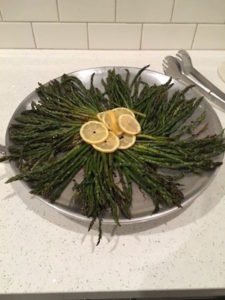
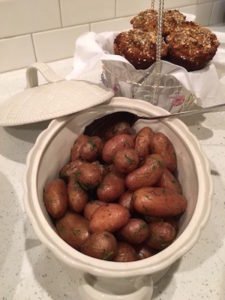
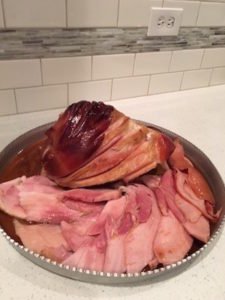
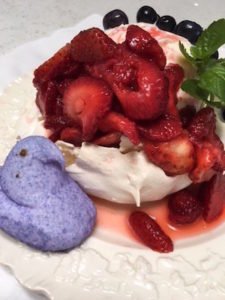
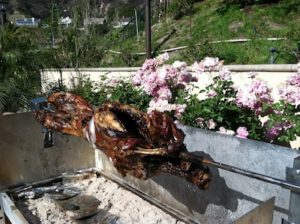
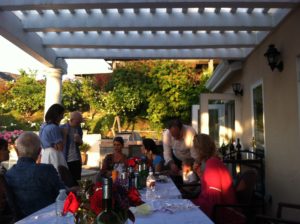
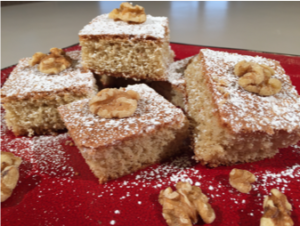
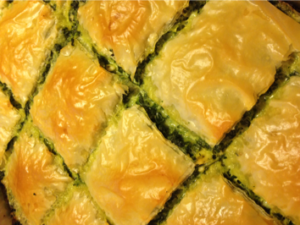
 Gerry Furth-Sides
Gerry Furth-Sides  Barbara Hansen
Barbara Hansen  Chef-owner Alain Cohen
Chef-owner Alain Cohen  Roberta Deen
Roberta Deen  Jose Martinez
Jose Martinez  Nivedita Basu
Nivedita Basu